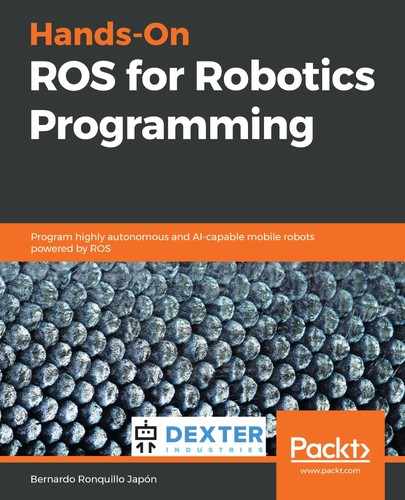Why a new book about learning robotics with ROS? Well, programming is but a small part of what it takes to work with robots. If you want to become really good at robotics, you'll need skills in other areas as well: electromechanics, robot simulation, autonomous navigation, and machine learning/reinforcement learning. Each of these four topics is a building block that you will need to master on your path to acquiring full robotics skills. This book is divided into four parts, each one being devoted to each of these building blocks.
Part 1, Physical Robot Assembly and Testing, focuses on electromechanics and describes each hardware part of the robot, providing practical demonstrations of how to test every sensor and actuator that it is equipped with. This part of the book should provide you with a good understanding of how a mobile robot works.
Part 2, Robot Simulation with Gazebo, deals with robot simulation. It is here where we introduce ROS and develop a two-wheeled robot simulation that emulates both the physical aspects and the behavior of an actual robot. We will explore the concept of the digital twin, a virtual robot that is the twin of a physical one. This is a fundamental part of developing robotic applications, as it cuts the costs associated with testing real hardware. The digital twin allows us to speed up the development process and save testing with the physical robot for the advanced stages of development.
Part 3, Autonomous Navigation Using SLAM, is devoted to robot navigation, the most common task for mobile robots. State-of-the-art algorithms and techniques are explained in a practical manner, first in simulation and then with a physical robot.
Part 4, Adaptive Robot Behavior Using Machine Learning, focuses on machine learning and reinforcement learning, the most active fields in robot research and real-world robotic applications. By using this technology, a robot is able to transition from pure automatism – where every possible behavior or answer is coded – to being a flexible behavior machine, where the robot is capable of reacting in a smart way to environmental demands by learning from data. This data can be obtained from the robot's previous experience or gathered from the experience of similar robots.
To build a state-of-the-art robot application, you will first need to master and then combine these four building blocks. The result will be what is commonly known as a smart robot. This is your task – this is your challenge.
